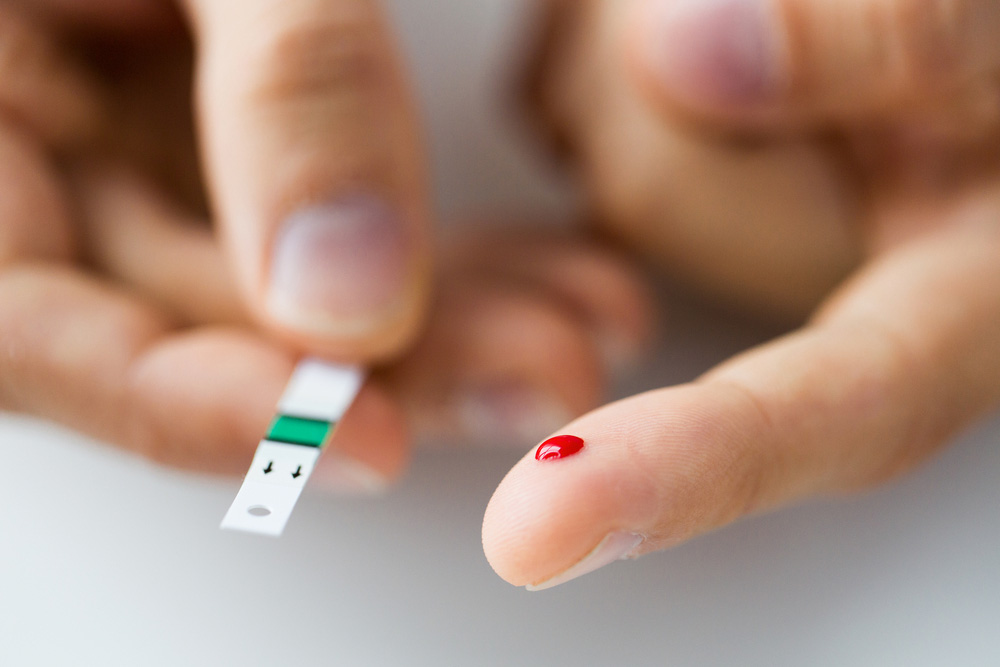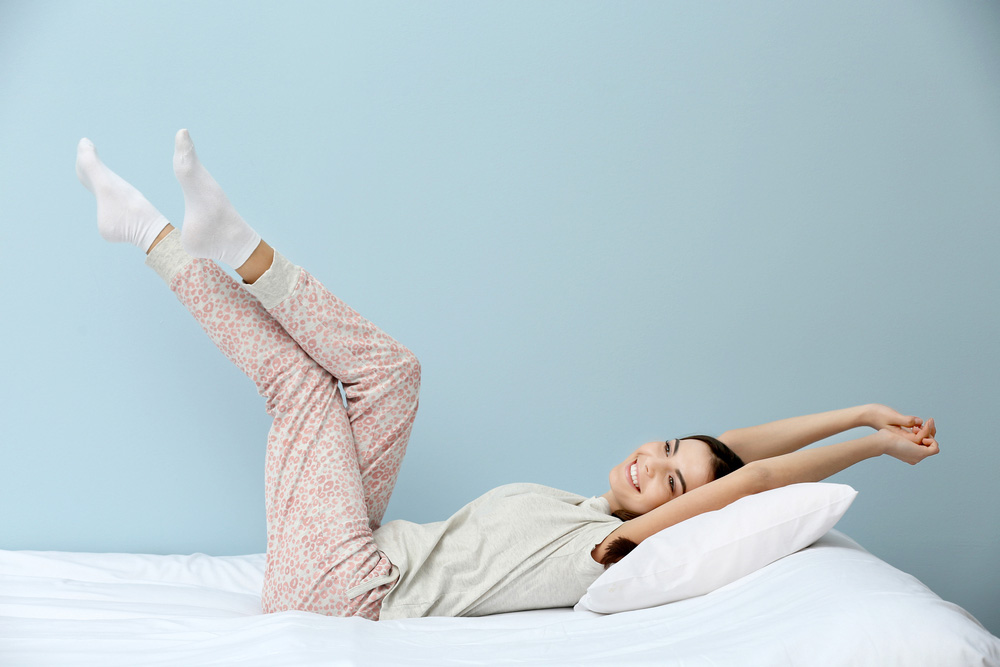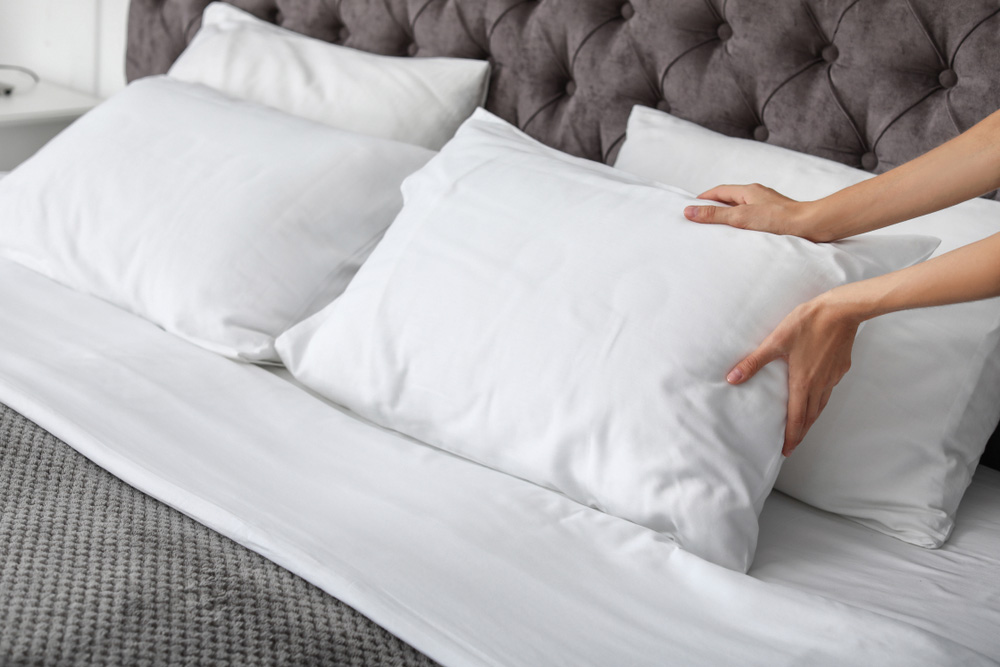
Best Sleeping Position for People With Diabetes
Unfortunately, poor sleep affects and exacerbates symptoms of diabetes, leading to high blood sugar, insulin resistance, and even weight gain. As such, getting a good night’s sleep is essential for an effective diabetes management plan.
If you’re wondering what the best sleeping position for diabetics is, the answer is that it depends. That’s because diabetics that have co-occurring health disorders may benefit from specific sleeping positions.
We’ll discuss these considerations in more detail in this article. We’ll also go over additional information that is useful for improving your sleep.
Let’s dive in.
How Does Diabetes Affect Sleep?

One of the reasons why diabetes affects sleep is that symptoms of hypoglycemia and hyperglycemia can make it hard to fall asleep and lead to waking up at night.
When blood sugar is high, the kidneys excrete more urine in order to overcompensate. As a result, sleeping with high blood sugar levels can cause disturbed sleep because of frequent nighttime urination. Symptoms such as dry mouth, nausea, and headaches can wake you up at night or prevent you from falling asleep.
Low blood sugar can also lead to a condition called nocturnal hypoglycemia. This can affect sleep due to issues such as shaking, restlessness, abnormal breathing, and racing heartbeats.
The emotional toll of living with diabetes can also affect sleep because mental health problems such as depression and anxiety often lead to insomnia.
Diabetes and Co-occurring Health Disorders

People with diabetes often experience health problems such as Sleep Apnea, Restless Leg Syndrome, and Diabetic Neuropathy, which can significantly affect sleep.
It’s crucial to understand these conditions in order to assess whether there’s a possibility you may have them and to adjust your sleeping habits in a way that prevents their specific symptoms.
Sleep Apnea
Sleep apnea is a condition mainly characterized by a lack of proper breathing during sleep. This disrupts the body’s oxygen supply and can lead to a variety of unpleasant symptoms.
According to a study, 48% of people that had type 2 diabetes were also diagnosed with Sleep Apnea. Research also suggests that individuals with type 1 diabetes may be more likely to have sleep apnea.
There are three kinds of sleep apnea.
Obstructive sleep apnea is the most common type, and it is characterized by a relaxation in the muscles in the back of the throat. This over-relaxation leads to airways narrowing or closing, consequently causing a cut-off in breathing.
Central sleep apnea occurs when the brain is unable to send proper signals to the muscles that control breathing, resulting in periods of no breathing.
Complex sleep apnea syndrome occurs when obstructive sleep apnea and central sleep apnea occur together.
Central and obstructive sleep apnea tend to have the following symptoms:
- Snoring
- Episodes in which breathing stops
- Gasping for air while sleeping
- Insomnia
- Morning headaches
- Daytime sleepiness
- Irritability
Restless Legs Syndrome (RLS)
Another sleep disorder often experienced by patients with Type 2 Diabetes is Restless Legs Syndrome.
This disorder is characterized by an uncontrollable urge to move the legs due to uncomfortable sensations such as throbbing and aching.
Accompanying symptoms include:
- Sensations that start during rest, such as when laying down or sitting for long periods of time
- Worsening of the symptoms at night
- Leg twitching and kicking at night
Diabetic Neuropathy
Diabetic Neuropathy is a condition in which nerve damage causes symptoms such as sharp pains.
The most common kind of Diabetic Neuropathy is Peripheral Neuropathy, and it is estimated to affect between 6% and 51% of patients with diabetes.
Symptoms include:
- Numbness to pain and temperature changes
- Tingling and burning sensations
- Sharp pains
- Weak muscles
- Extreme sensitivity to touch that leads to pain
Best Sleeping Position for Diabetics

The best sleeping position for diabetics highly depends on whether there’s a co-occurring disorder that affects sleep.
Therefore, it’s advisable to consult a doctor in order to diagnose or rule out these disorders in case you have associated symptoms. In turn, you can adjust your sleeping habits according to the following recommendations:
Best Sleeping Position for Sleep Apnea
If you have sleep apnea, the best sleeping positions are on your side or on your belly. That’s because these positions help the airways stay open, which in turn reduces symptoms of sleep apnea.
If you choose to sleep on your stomach, make sure to choose a thin pillow to avoid a stiff neck when waking up.
Sleeping on your back is not advisable because gravity can make the tongue relax, obstructing the airways.
To prevent sleep disturbance from Sleep Apnea, it’s also advisable to seek out treatments such as Continuous Positive Airway Pressure (CPAP).
Best Sleeping Position for Restless Legs Syndrome
If you have RLS, the best sleeping positions are on the side with a pillow in between your legs or on your back with a pillow under your legs because they promote blood flow.
Another tip is to use a Sequential Compression Device (SCD). This device fits in the legs and massages them by inflating and deflating. According to a study, using an SCD for an hour before bedtime for three months reduced symptoms of RLS and improved social function, daily task function, sleep quality, and emotional well-being.
Best Sleeping Position for Diabetic Neuropathy
According to a study, the best sleeping positions for patients with Diabetic Neuropathy are on the back with a pillow under the legs, on the side with a pillow in between the legs, and on a recliner. This is because these positions extend the spine, in turn decompressing the nerves that control the feet.
Best Sleeping Position for Diabetics
If you don’t have one of these health problems, you can sleep either on your back or on your side. Both these positions promote spinal support and alignment, which relieves pressure on the spinal tissues and allows muscles to relax.
Tips for Improving Your Sleep

There are a variety of ways to improve your sleep quality, and this article wouldn’t be complete without discussing them.
Let’s go over some tips diabetics can use to achieve a good night’s rest.
Maintain a Healthy Diet
A healthy diet, particularly one that controls blood glucose levels, not only helps you lose weight but is also essential for a good night’s sleep. That’s because blood sugar fluctuations are one of the most common causes of inadequate sleep for diabetics. They can cause both difficulties falling asleep and sleep disruption by making you wake up at night.
In order to ensure blood sugar control, it’s advisable to have a nighttime snack that has a low glycemic index and includes healthy proteins and fats. These foods can effectively satisfy hunger while preventing blood sugar spikes at night.
Engage in Regular Exercise
Regular exercise has been proven to promote quality sleep. Moreover, physical activity comes with an additional benefit: weight loss. A healthy weight helps reduce symptoms of diabetes, which in turn promotes better sleep.
Physical activity also offers a wide range of mental health benefits. This can be helpful for diabetics to cope with the emotional toll of their disease, and improved mental health can have positive effects on sleep quality.
Focus On Sleep Hygiene
Good sleep habits, also referred to as “sleep hygiene”, can help you get a more restful sleep.
Here are some tips:
- Aim for consistency by sleeping and waking up at the same time each day of the week
- Avoid electronic devices before bed
- Keep your bedroom dark and quiet
- Avoid caffeine and alcohol at nighttime
- Take a warm bath at night
Get Enough Sleep
The National Sleep Foundation advises at least 7 hours of sleep per night. Sleeping less than six hours can be considered sleep deprivation and lead to consequences such as daytime sleepiness and lack of concentration. Moreover, sleep deprivation raises levels of cortisol, which can lead to weight gain and is associated with an increased risk of having a heart attack.
The best way to prevent the consequences of too little sleep is by maintaining a regular sleep schedule. In this way, you’ll know exactly how much you’re sleeping every night.
That being said, it’s also important not to get too much sleep. Sleeping too much can lead to back pain and headaches, as well as an increased risk of heart disease and obesity.
Reduce Stress
Stress and anxiety can lead to inadequate sleep and insomnia. As such, managing these emotions is essential for a better night’s sleep.
One quick, effective way to reduce stress is to practice deep breathing. This technique can be performed with the following steps:
- Place your left hand on your chest and your right hand on your belly
- Breathe in slowly through the nose, allowing your belly to rise and expand fully
- Breathe out slowly through the mouth
Conclusion

Sleep problems can affect your life quality significantly. Fortunately, it’s possible to improve sleep by applying the tips we discussed in this article.
If you need help in managing your diabetes, make sure to check out the Klinio App. It allows you to manage various aspects associated with better sleep, including your nutrition and exercise levels.







